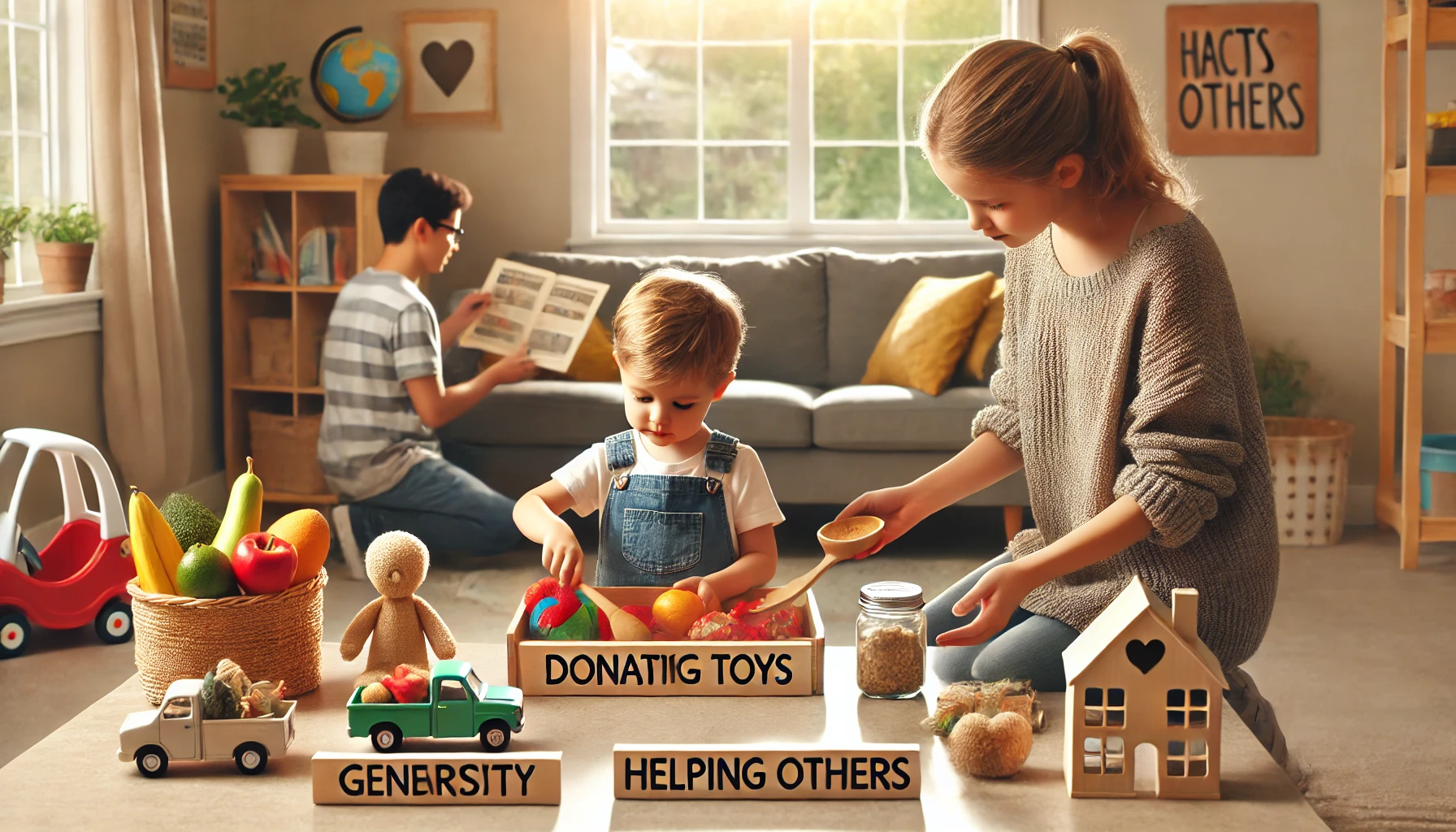How to Teach Young Children About Helping Others and Community Responsibility
Teaching children about helping others and being responsible members of their community fosters kindness, empathy, and a sense of belonging. When children learn that their actions can positively impact others, they become more compassionate and socially aware. Parents can encourage this mindset through role-modeling, hands-on activities, and real-life experiences. In this article, we’ll explore practical ways to teach young children about helping others and taking responsibility in their community.
Why Teaching Helping Others is Important
- Encourages kindness and generosity – Helps children understand the joy of giving.
- Builds empathy and social awareness – Teaches kids to recognize and respond to others’ needs.
- Strengthens teamwork and cooperation – Encourages working together for a common goal.
- Fosters a sense of belonging – Helps children feel connected to their family, friends, and community.
- Prepares for responsible citizenship – Develops lifelong habits of contributing to society.
1. Model Kindness and Helping Behavior
Children learn by observing how adults treat others with kindness and generosity.
Activity Idea:
- Let your child see you helping a neighbor, donating items, or volunteering.
- Say, “I’m helping because it feels good to do something kind for others.”
- Encourage everyday kindness, such as holding the door for someone or saying thank you.
What Kids Learn:
- That helping others is a natural and positive habit
- How small acts of kindness make a big difference
- That generosity and respect go hand in hand
2. Encourage Helping at Home
Giving children responsibilities at home teaches them the value of helping others.
Activity Idea:
- Assign small chores like feeding a pet, setting the table, or watering plants.
- Praise their efforts: “Thank you for helping! That made our home a better place.”
- Create a family helping chart to track daily contributions.
What Kids Learn:
- That everyone has a role in making a household run smoothly
- The importance of teamwork and shared responsibilities
- How helping at home builds confidence and independence
3. Teach the Importance of Sharing with Others
Helping others often means sharing time, skills, or resources.
Activity Idea:
- Encourage toy or book swaps with friends and siblings.
- Explain that sharing isn’t about losing something, but about making others happy.
- Use phrases like “Let’s take turns so we can both enjoy it!”
What Kids Learn:
- That sharing creates positive experiences for everyone
- How generosity strengthens friendships
- That helping can be as simple as sharing what we have
4. Read Books About Helping and Kindness
Stories help children understand how helping others makes a difference.
Activity Idea:
- Read books like The Giving Tree by Shel Silverstein or Have You Filled a Bucket Today? by Carol McCloud.
- Discuss how the characters showed kindness and what your child can do in real life.
- Ask, “How do you feel when someone helps you?” to build empathy.
What Kids Learn:
- That kindness and generosity are valuable traits
- How helping others can bring happiness
- That even small acts of kindness can have a big impact
5. Participate in Community Service Together
Getting involved in community activities teaches children that they can make a difference.
Activity Idea:
- Donate gently used toys or clothes to a charity together.
- Help clean up a local park or participate in a food drive.
- Visit an elderly neighbor or write thank-you notes to community helpers.
What Kids Learn:
- That helping extends beyond family and friends
- The value of contributing to a larger community
- How teamwork can create a positive change
6. Teach Children to Notice When Someone Needs Help
Helping isn’t just about planned activities—it’s about everyday awareness.
Activity Idea:
- Encourage children to look around and ask, “Who might need help right now?”
- Role-play scenarios where they offer help to a friend who is struggling.
- Praise them when they show initiative: “That was so kind of you to help your friend pick up their toys.”
What Kids Learn:
- How to recognize when someone is in need
- That offering help makes relationships stronger
- The importance of being thoughtful and observant
7. Make Helping Others a Fun Family Tradition
Creating regular habits around kindness makes helping others a natural part of life.
Activity Idea:
- Have a “Kindness Challenge” where each family member does one act of kindness daily.
- Make a “Help Jar” filled with ideas like “Make a card for a friend” or “Help bake cookies for a neighbor.”
- Celebrate acts of kindness together by talking about them at the dinner table.
What Kids Learn:
- That helping can be fun and rewarding
- How kindness strengthens family and community bonds
- That small efforts add up to big differences
8. Praise and Reinforce Kind and Helpful Behavior
Encouraging children when they help others builds their motivation to continue.
Activity Idea:
- Say, “I saw how you shared your toy—that was so thoughtful!”
- Use a “Helping Star Chart” where kids earn stars for acts of kindness.
- Ask, “How did helping make you feel today?” to encourage reflection.
What Kids Learn:
- That helping others is appreciated and valued
- How good it feels to make someone else happy
- The joy of contributing to the well-being of others
Final Thoughts
Teaching young children about helping others and community responsibility fosters kindness, empathy, and a sense of belonging. By modeling generosity, encouraging community involvement, and reinforcing kind behavior, parents can raise compassionate children who contribute positively to the world around them.
